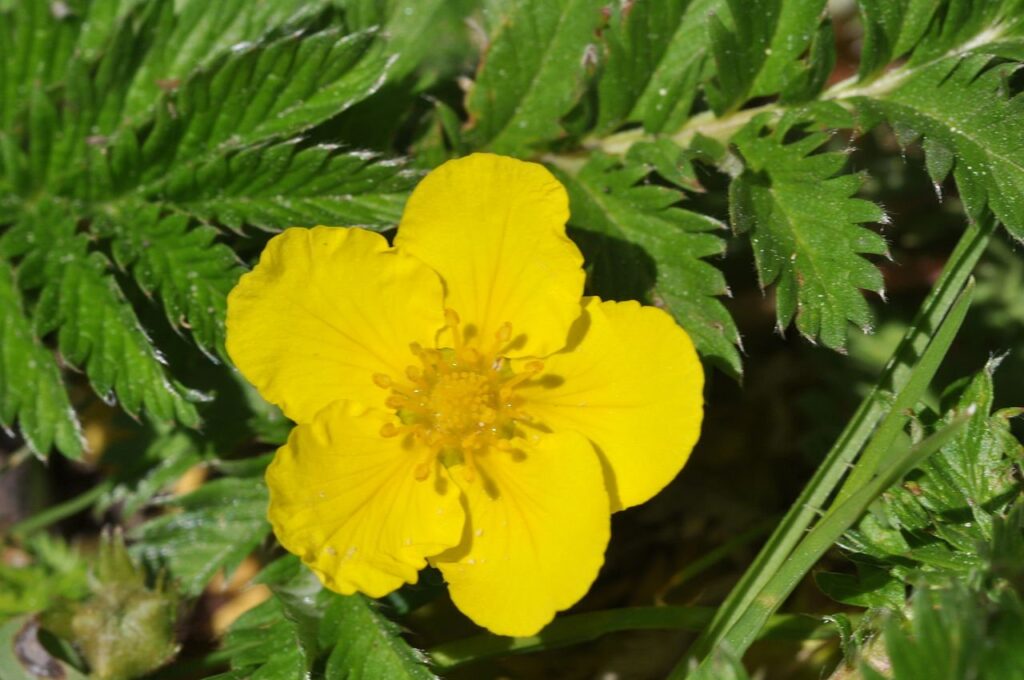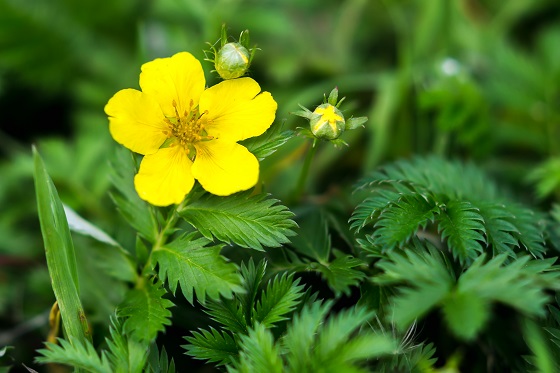Crayfish Tail, scientifically known as Potentilla anserina, is a modest, often overlooked plant that grows wild on roadsides, in meadows, and damp places. With silvery, pinnate leaves reminiscent of a crayfish’s tail (hence its common name), and small, yellow flowers, this plant is a true natural treasure, used for centuries in traditional medicine for its exceptional therapeutic properties.
In this blog post, we explore the therapeutic benefits of crayfish tail, its medicinal uses and how to incorporate it into your health routine.
Therapeutic Properties of Crayfish Tail
The medicinal virtues of Crayfish Tail are attributed to its richness in bioactive compounds, including:
- Tannins: These are responsible for the plant’s astringent properties, helping to contract tissues and reduce inflammation.
- Flavonoids: Powerful antioxidants, flavonoids protect cells from oxidative stress and contribute to reducing inflammation.
- Bitter substances: These stimulate the secretion of digestive juices and can improve digestion.
- Mucilage: These viscous, gelatinous substances have a calming and protective effect on mucous membranes.
- Mineral salts: Contribute to electrolyte balance and proper body function.
Due to this complex composition, Crayfish Tail exhibits the following therapeutic properties:
- Astringent: Helps stop bleeding and tone tissues.
- Anti-inflammatory: Reduces inflammation in various conditions.
- Antispasmodic: Relaxes smooth muscles, alleviating cramps and spasms.
- Antidiarrheal: Due to its astringent effect, it is effective in cases of diarrhea.
- Analgesic (mild): Can contribute to pain relief.
- Diuretic: Promotes the elimination of excess water from the body.
Medicinal Uses of Crayfish Tail
Crayfish Tail has been and continues to be used for a variety of ailments, both internally and externally:
1. Digestive Disorders:
- Diarrhea: This is one of the most well-known uses of Crayfish Tail. Tannins help reduce the frequency of stools and consolidate their consistency.
- Colic and abdominal cramps: Antispasmodic properties help alleviate abdominal pain caused by spasms of the intestinal smooth muscles. It is particularly effective for colic in babies and young children.
- Gastritis and gastric ulcer: The calming effect of mucilage and the anti-inflammatory effect can help soothe irritation of the gastric mucosa.
2. Gynecological Conditions:
- Dysmenorrhea (painful menstruation): Antispasmodic and anti-inflammatory properties make it useful in reducing menstrual cramps.
- Abnormal uterine bleeding: The astringent effect can help reduce excessive bleeding.
3. Oral and Pharyngeal Conditions:
- Gingivitis, stomatitis, pharyngitis: As a gargle or rinse, Crayfish Tail infusion reduces inflammation and gum bleeding.
- Mouth ulcers: The astringent and anti-inflammatory effect helps heal mouth ulcers.
4. External Use:
- Wounds, cuts, minor burns: Compresses with Crayfish Tail infusion accelerate healing, reduce inflammation, and prevent infections.
- Hemorrhoids: Sitz baths with Crayfish Tail decoction can alleviate inflammation and pain associated with hemorrhoids.
- Varicose veins: Local compresses can help relieve discomfort and inflammation of varicose veins.
- Muscle and joint pain: Poultices with fresh crushed plant or warm decoction compresses can reduce pain and inflammation.
Methods of Use
The most common forms of using Crayfish Tail include:
- Infusion: Prepare from one teaspoon of dried plant per cup of hot water. Let steep for 5-10 minutes, then strain. Drink 2-3 cups a day.
- Decoction: Prepare from 1-2 teaspoons of dried plant per cup of water. Boil for 5-10 minutes, then strain. It is more concentrated and often used for external applications.
- Tincture: Available commercially and administered according to package directions.
- Poultices: Use fresh, crushed plant applied directly to the affected area, or compresses soaked in decoction.
Precautions and Contraindications
While Crayfish Tail is considered a safe plant, it’s important to consider the following:
- Pregnancy and breastfeeding: There are insufficient studies on the safety of use during these periods, so caution is advised.
- Constipation: Due to its astringent effect, excessive consumption may worsen constipation in predisposed individuals.
- Consult a specialist: It is always advisable to talk to a doctor or herbalist before starting any herbal treatment, especially if you suffer from chronic conditions or are taking other medications.

Crayfish Tail is a clear example of how nature offers us simple and effective solutions for health. Rediscovering and valuing this plant can bring significant benefits to our well-being.
Have you ever used Crayfish Tail?
What are your experiences?

